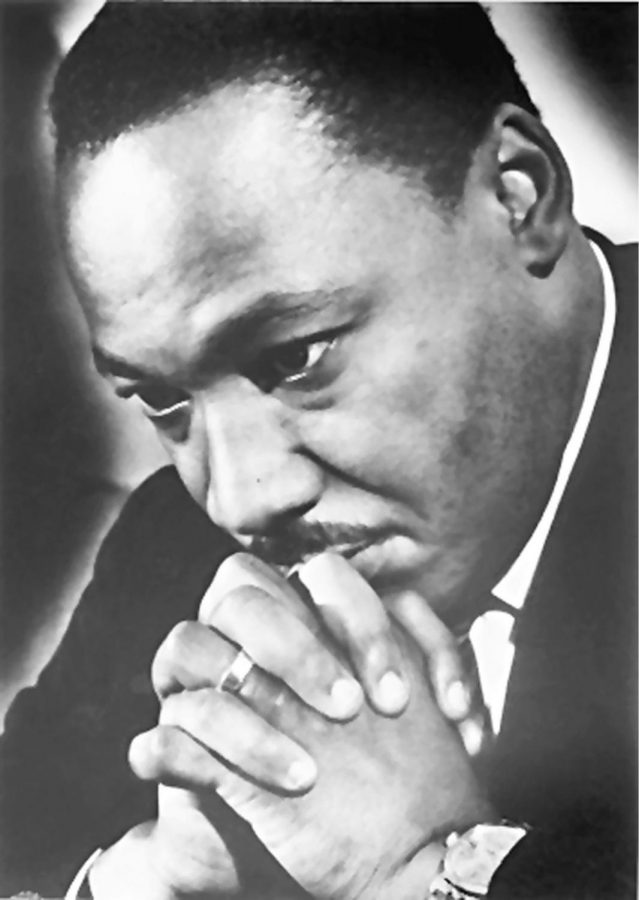The Assassination of a King
“Our lives begin to end the day we become silent about things that matter”
-Dr. Martin Luther King, Jr.
On April 4, 1968, Dr. Martin Luther King, Jr., was assassinated in Memphis, TN, by a man named James Earl Ray. On that warm Thursday evening, when the bullet from his assassin’s gun entered his body, Dr. King did not die as was intended; instead, James Earl Ray immortalized him. His Remington Model 760 rifle became the pen that wrote Dr. King’s name in history. In death, Dr. King was no longer a man but an icon, synonymous with civil rights and a champion of freedom everywhere. Fifty years later, the ideas Dr. King upheld could not be more important, the issues he argued could not be more pressing, or the legacy he left could not be more enduring. While his assassination brought grief to millions, Dr. King’s work in life and his tragic end inspired generations who told his story. His assassination, one of the most important events of the Civil Rights Movement, if not of the history of the entire United States, and as such, Benet Academy should understand what happened on that day fifty years ago, the day a King was assassinated.
In April of 1968, Dr. Martin Luther King, Jr., was in Memphis to help protest against the city’s discriminatory practices towards African American sanitation workers. These employees were paid less than their white counterparts and were forced, unlike white employees, to work during awful storms and other weather conditions in order to receive their pay, resulting in several laborers being killed on the job. The African American sanitation workers began their strike on February 11, 1968, and King arrived on April 3 to lead protests alongside these workers. On that day he delivered his “I’ve Been to the Mountaintop” speech, saying in it that he had seen a future in which equal rights were attainable for African Americans, a future he referred to as their “Promised Land.” In this speech, Dr. King also referenced a recent bomb threat he received and prophetically said that he did not know if he would live to enter such a Promised Land, but he was willing to accept his fate, whatever it would be.
The next day, April 4, at 6:01 p.m., Dr. King was shot while on the balcony of the Lorraine Motel, where he had been staying with fellow activist Reverend Ralph Abernathy while in Memphis. The bullet entered his body at the jaw and severed the jugular vein and several other major arteries, causing King to collapse and become unconscious. He was taken to St. Joseph’s Hospital, where he was pronounced dead at 7:05 p.m. The assassin, James Earl Ray, was a recently escaped convict from Missouri State Penitentiary. He fled the scene of the crime, and a bag was later discovered containing several items connected to King’s murder with Ray’s fingerprints on them. A nationwide manhunt was launched for Ray, eventually turning international when he was captured at London’s Heathrow Airport two months later and was then extradited back to the United States to stand trial. He was found guilty and was sentenced to ninety-nine years in prison, avoiding the death penalty by pleading guilty.
King’s wife, Coretta Scott, grieved the loss of her husband and tried to explain the loss to her four young children. One hundred African American communities across the nation began to riot as a result of the assassination, as they too felt the pain of losing their civil rights champion and felt torn between continuing King’s peaceful policy of protest or becoming radical and violent in the face of such brutality. However, the city of Indianapolis, IN, was spared such riots thanks to Robert Kennedy, brother of the recently assassinated president John F. Kennedy. Robert Kennedy was to give a speech in a black neighborhood in Indianapolis to drum up support for himself for the Democratic primaries, but upon hearing of Dr. King’s death, he changed his speech’s goal from winning votes to winning over hearts. Kennedy told his audience that Dr. King had just been killed by an assassin, but he told them that they had a choice: to give in to the polarization of the nation along the basis of race or to try and work for a better future. Kennedy told them he knew what their loss was like, as his brother has been assassinated five years earlier by another white man, Lee Harvey Oswald, and he urged them to choose the better path that he knew came only through pain. This speech helped prevent a riot throughout the city and has been praised as one of the best speeches given by Robert Kennedy. President Lyndon B. Johnson personally telephoned Coretta Scott to offer his condolences for her husband. Five days later, on Tuesday, April 9, a funeral was held for Dr. King in Atlanta, Georgia, his home town. 100,000 attended the funeral.
James Earl Ray escaped from the Brushy Mountain State Penitentiary in Petros, TN, on June 10, 1977, and was recaptured three days later on June 13. He would die at the age of 70 on April 23, 1998, from kidney and liver failure caused by Hepatitis C.
That is the story of how the man who had a dream was killed; however, that is not the story of how his dream died. The dream of Dr. Martin Luther King, Jr., lives on today, and it has grown even stronger over the past fifty years. The United States can never forget the lives of men like Dr. King and the sacrifice they made to help their nation, nor should the United States ever forget the dreams of these great men and the hope they held of a better future for their children.








